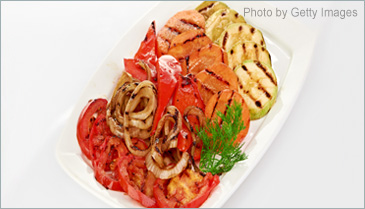 Mark Hyman, MD
Mark Hyman, MD
Eating outside the home comes at a high price. We spend our hard-earned dollars upfront only to pay more at a later date due to hidden healthcare costs not seen on the menu!
Temptations from the food industry are addictive such as salty, sugary, high-calorie, nutrient-poor foods that negatively affect our health and take years off of our lives. Real food is medicine – healing your body with every bite.
Ingredients that are not meant to be consumed either in moderate quantities, or at all, are lurking in generous amounts in restaurant meals. Owners of restaurants want to see you satisfied and return frequently which drives motivation to include these unnecessary and harmful ingredients.
From hydrogenated oils, poor-quality fats, sweeteners, and hydrolyzed proteins to preservatives, additives, and bulking agents, there is a lot to beware of!
I travel a lot and have become a connoisseur at scoping out the good from the bad. I have spent years on the road promoting health through smart nutrition and have learned a lot. Unfortunately, my experiences have shown me mostly about what not to eat.
As a leader in functional medicine, a parent, and a concerned consumer, I want to know what it is I can eat. Sometimes you need to eat out and want choices you can feel good about! While I recommend you avoid doing so as best as you can, the following can make seemingly impossible decisions about what and where to eat easier for you.
Surviving Restaurants
Does all that fancy marketing and shiny advertising restaurants use to manipulate your emotions make you lose your willpower or wonder if you ever had any to begin with? If you feel like you lose control and get distracted from your healthy meal plan when you face a commercial, billboard or even a sign outside a restaurant you are not alone nor are you crazy!
The human brain is wired to be drawn to salty, sugary, and fatty foods – it is part of our survival. But luckily we don’t have to worry about famine, so the reality is we do not require these rich, high- calorie, and nutrient-poor meals.
In fact, those pictures of decadent cuisine are really false advertising. You’re promised luxury when in fact, eating junk food delivers you nothing but empty nutrition which leaves your body starving for real food.
While the restaurant industry wants our business, we do have the power to choose where we spend our food dollars. This is how to succeed the next time you are in a position to eat out:
- Choice. The more options you have, the better. Competition is a good thing when it comes to selecting a good restaurant. Look for an area that is bustling with a variety of choices for where you can eat.
- Quality menu. Don’t be afraid to ask to see a menu before you agree to sit down. Don’t be fooled by buzzwords such as “organic” which are used to get your attention. Remember, the ingredients are what matters – a candy bar can be organic but sugar will not reverse diabesity! Scan the menu and look for keywords such as fresh, local, seasonal, organic grass-fed.
- Go online before you stand in line. Most restaurants have their menus posted on their website. Choose a restaurant that allows you to plan ahead of time by checking out their menu at home or at the office.
- Slow food. These restaurants appreciate that you deserve high-quality food and provide flavorful meals that satisfy you from the inside out. Slow food is a celebration of life presented through food.
- Is your restaurant sensitive? Not about your feelings, necessarily, although that would be nice! Look for eateries that tolerate and cater to food sensitivities such as gluten, dairy, corn, soy, eggs, and yeast. At the very least, inquire how flexible the chef is about modifying meals.
- Travel the globe. Ethnic cuisine tends to have those phytochemicals that are so important for health and for curing diabesity.
How to Order at a Restaurant
- Be obnoxious! Be clear about your needs and do not accept any food that does not nourish or support you. Do not assume you are being impolite; you are simply taking care of yourself.
- Have an opinion. Choose the restaurant, if possible, when dining with others.
- Tell the server you do not want bread on the table nor the alcohol menu. But do ask for raw cut-up veggies without dip.
- Ask for water. Drink 1-2 glasses before your meal to reduce your appetite.
- Tell the server you will die if you have gluten or dairy. Not a lie – just a slow death.
- Ask for simple food preparation. Order grilled fish with an entire plate of steamed vegetables drizzled with olive oil and lemon. Always ask for olive oil and lemon in lieu of dressing.
- Skip the starches. Ask for double vegetables.
- Avoid sauces, dressings, and dips. They are usually laden with hidden sugars, unhealthy oils, gluten, and dairy.
- Honor responsible portion sizes. Always combine a carbohydrate with some fiber, protein, or anti-inflammatory fats. Never carb it alone!
- Focus on protein. Choosing your protein first is really helpful to ensure your blood sugar will be balanced and you will eat the right portion size.
- Ask for berries for dessert.
Are you afraid of overdoing it when you eat out? Nobody likes to feel uncomfortably stuffed so it is important to remember how much control you actually have (even though restaurants don’t want you to think so)!
By avoiding some of the triggers listed above you are already doing so much for yourself. One other tip I want to share with you is the philosophy of the Okinawans in Japan – hari hachi bu “Eat until you are 8 parts (out of 10) full”. By tuning into your hunger sensation you can listen for the cue your body sends to put the fork down at the exact moment appropriate for your body.
By eating until you are no longer hungry (not stuffed), you can empower your digestion to work with your metabolism to keep your hormones in balance and your waistline in sight! Each meal is an opportunity to bring health to your life and, luckily, we get many opportunities daily to help reach our goals.
Celebrate your life with the food you eat.




